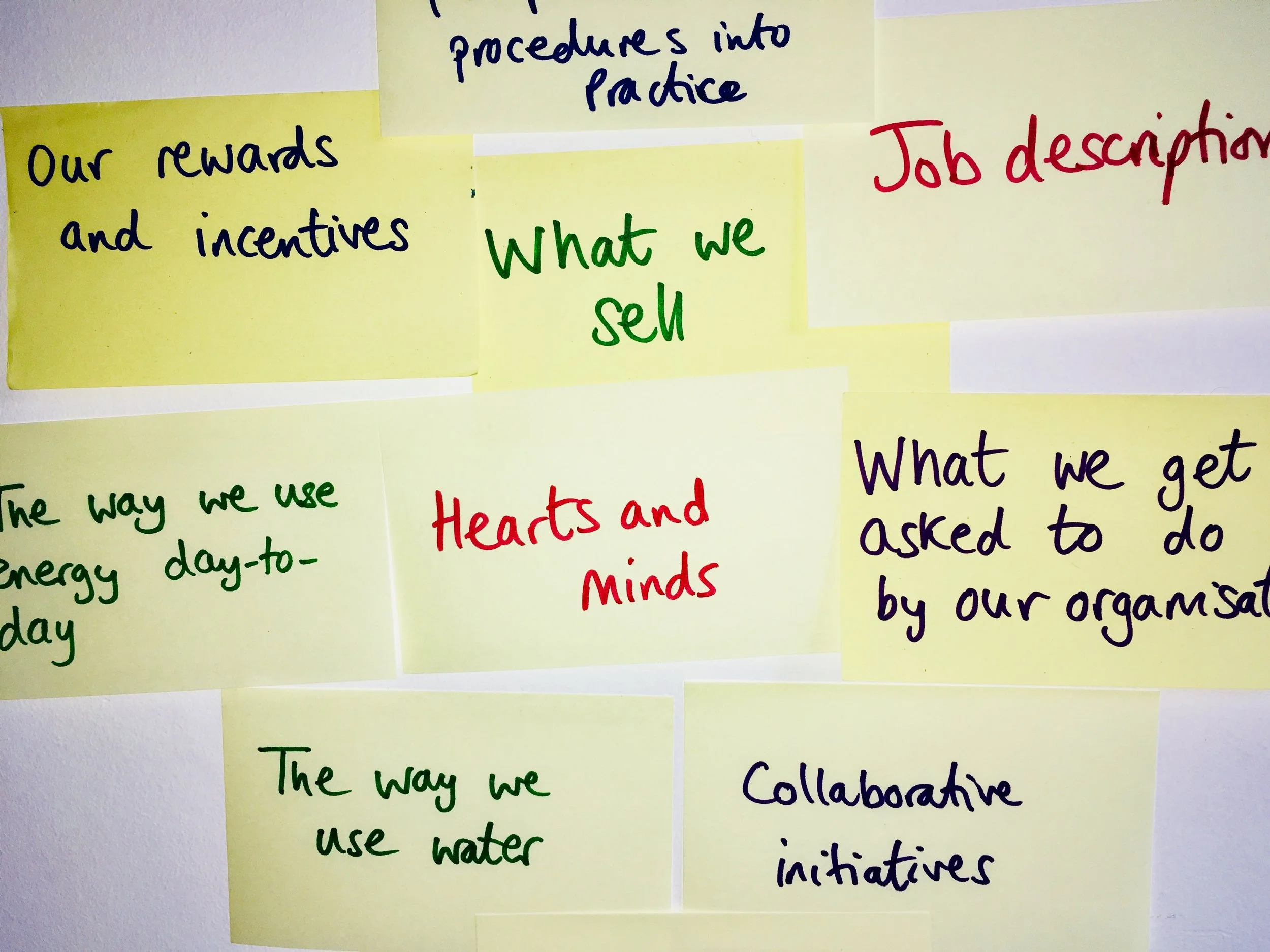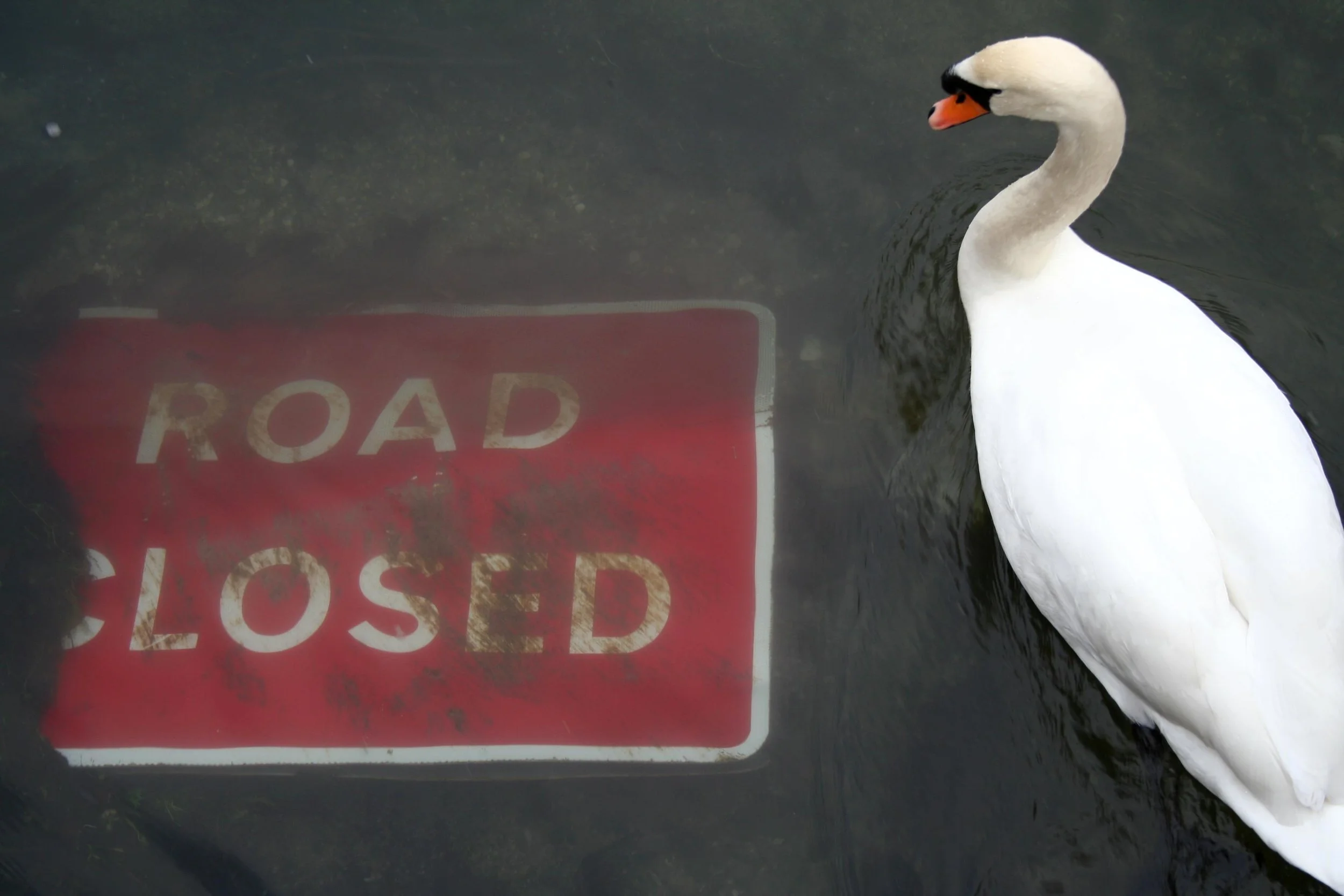When you think about the changes you want to bring about, to make your organisation or sector more sustainable, what do you see changing? Do you have blind spots about where change might happen, and how deep or how obvious it will be?
Edgar Schein’s Three Levels of Culture model is a great way of understanding what might change, as an organisation or other entity changes. It’s useful to think very widely about the kinds of things that might change – or need to change – to get us on track for sustainable development.
Managing the change to sustainability
Croner-i’s “Environment” magazine asked me to share key insights from Change Management for Sustainable Development. That article is out now, in the spring edition (no. 74).
You can download it here.
Tldr:
Understand where your organisation is now…
The 'do they really mean it?' test
Sustainability initiatives! Low-carbon innovation; gender equality; getting rid of single-use plastics; well-being.... In-house sustainability change makers and the consultants who help them are forever devising and launching initiatives and campaigns to get colleagues to do things differently. Sometimes colleagues take them up whole-heartedly and they develop a life of their own. Sometimes you get feeling people are sighing and rolling their eyes, waiting for it to fade away. What makes the difference?
Ritual and joining an established group
Yesterday I was at a family funeral. The rite was one I'm only a little familiar with: enough to follow, but not enough to know what was coming next. It's made me reflect on the rituals - acknowledged and unnoticed - that we perpetuate in groups and professions. So comforting and affirming for those in the know. Provoking anxiety, confusion or ridicule in the newcomer.
There was a written 'order of service', which included the information that no doubt seemed useful to those who wrote it - the things that would be different, or special, about the event. The things that would be the same as they always are, were not included. Which makes sense if you are already part of the group and you know what those things are, and means you are very lost if you are there for the first time.
What do we take the time to explain to people who are new to our way of working? What do we consider so self-evident that we don't think explanation is needed? How do we respond when someone asks or seems lost?
What do we open our minds to when we first join a group? What do we do to show we are interested and curious, yet a bit lost? What do we attack, without having the patience to observe and attempt to understand?
How we do things round here
Organisational culture. Where to begin? Like behaviour change and values, it's one of those phenomena of human experience that promises to unlock sustainability if you can only work out how to harness it, but tantalises by just not being reducible to simple rules or mechanistic predictions.
The canny editorial team over at The Environmentalist invited me to write a two-part feature to introduce IEMA members to this scotch mist, and I love a challenge like that. Even though I know the result will be partial and full of holes, I'd love to help people begin to navigate this treacherous territory with a few useful landmarks.
So I had a go, and part one is available here and part two here.
Essential sources
The research and planning process for the article was fun too, once I'd decided to focus right down on something manageable. (After all, this was for a 1,400 word feature, not a thesis.)
I chose to re-read Edgar Schein's classic Organizational Culture and Leadership. The resulting mind map of notes is two A4 sheets of close tiny handwriting. I also finally got round to properly reading William Bridges' Character of Organisations, which I was introduced to by Lindsey Colbourne (I still have your copy Lindsey!) when she was helping Sciencewise think about designing approaches to public dialogue which match the organisational cultures found in Whitehall Departments and government agencies. Her insightful background research report on the "Departmental Dialogue Index" is here and the summary paper containing the diagnostic tool is here.
Schein's book is wonderful for its stories. I enjoyed being alongside him as a reader, as he gradually realises how little he understands the organisations he is exploring. He opens himself up to not knowing, thereby allowing himself to hear the new (more accurate) interpretations of the behaviours and artefacts. There's something of the anthropologist about him, understanding organisations by being present in them as a participant observer.
Bridges' approach starts from a framework more commonly used to understand the individual - the MBTI's contrasting pairs of judging / perceiving; sensing / intuition; extraversion / introversion; thinking / feeling. He takes this and looks at how it might manifest in organisations.
This is arguably a less intellectually rigorous approach than Schein's. I definitely find myself drawn to the open-endedness and ambiguity of the anthropologist. But there is also something attractively pragmatic in Bridges' work. And the book contains a questionnaire that readers can use to assess an organisation - good for people (and organisations) which like applied theory.
Sharing TUI Travel's journey
Many thanks to Rosie Bristow and Sarah Holloway who took the time to talk to me about how understanding organisational culture within TUI Travel helped them to tailor their sustainability work to be more effective. As well as reading about this in my article, you can see the enthusiastic buy-in they've generated here.


